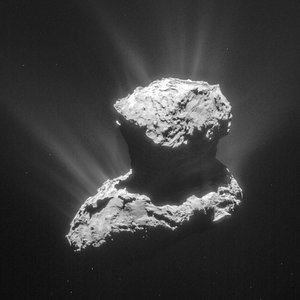Accept all cookies Accept only essential cookies See our Cookie Notice

About ESA
The European Space Agency (ESA) is Europe’s gateway to space. Its mission is to shape the development of Europe’s space capability and ensure that investment in space continues to deliver benefits to the citizens of Europe and the world.
Highlights
ESA - United space in Europe
This is ESA ESA facts Member States & Cooperating States Funding Director General Top management For Member State Delegations European vision European Space Policy ESA & EU Space Councils Responsibility & Sustainability Annual Report Calendar of meetings Corporate newsEstablishments & sites
ESA Headquarters ESA ESTEC ESA ESOC ESA ESRIN ESA EAC ESA ESAC Europe's Spaceport ESA ESEC ESA ECSAT Brussels Office Washington OfficeWorking with ESA
Business with ESA ESA Commercialisation Gateway Law at ESA Careers Cyber resilience at ESA IT at ESA Newsroom Partnerships Merchandising Licence Education Open Space Innovation Platform Integrity and Reporting Administrative Tribunal Health and SafetyMore about ESA
History ESA Historical Archives Exhibitions Publications Art & Culture ESA Merchandise Kids Diversity ESA Brand Centre ESA ChampionsLatest
Space in Member States
Find out more about space activities in our 23 Member States, and understand how ESA works together with their national agencies, institutions and organisations.
Science & Exploration
Exploring our Solar System and unlocking the secrets of the Universe
Go to topicAstronauts
Missions
Juice Euclid Webb Solar Orbiter BepiColombo Gaia ExoMars Cheops Exoplanet missions More missionsActivities
International Space Station Orion service module Gateway Concordia Caves & Pangaea BenefitsLatest
Space Safety
Protecting life and infrastructure on Earth and in orbit
Go to topicAsteroids
Asteroids and Planetary Defence Asteroid danger explained Flyeye telescope: asteroid detection Hera mission: asteroid deflection Near-Earth Object Coordination CentreSpace junk
About space debris Space debris by the numbers Space Environment Report In space refuelling, refurbishing and removingSafety from space
Clean Space ecodesign Zero Debris Technologies Space for Earth Supporting Sustainable DevelopmentLatest
Applications
Using space to benefit citizens and meet future challenges on Earth
Go to topicObserving the Earth
Observing the Earth Future EO Copernicus Meteorology Space for our climate Satellite missionsCommercialisation
ESA Commercialisation Gateway Open Space Innovation Platform Business Incubation ESA Space SolutionsLatest
Enabling & Support
Making space accessible and developing the technologies for the future
Go to topicBuilding missions
Space Engineering and Technology Test centre Laboratories Concurrent Design Facility Preparing for the future Shaping the Future Discovery and Preparation Advanced Concepts TeamSpace transportation
Space Transportation Ariane Vega Space Rider Future space transportation Boost! Europe's Spaceport Launches from Europe's Spaceport from 2012
The Rosetta orbiter
Thank you for liking
You have already liked this page, you can only like it once!
The Rosetta orbiter
Scientific consortia from institutes across Europe and the United States provided the 11 instruments of the orbiter:
ALICE, Ultraviolet Imaging Spectrometer, characterising the composition of the comet nucleus and coma
CONSERT, Comet Nucleus Sounding Experiment by Radio wave Transmission, studying the internal structure of the comet with the Philae lander
COSIMA, Cometary Secondary Ion Mass Analyser, studying the composition of the dust in the comet’s coma
GIADA, Grain Impact Analyser and Dust Accumulator, measuring the number, mass, momentum and velocity distribution of dust grains in the near-comet environment
MIDAS, Micro-Imaging Dust Analysis System, studying the dust environment of the comet
MIRO, Microwave Instrument for the Rosetta Orbiter, investigating the nature of the cometary nucleus, outgassing from the nucleus and development of the coma
OSIRIS, Optical, Spectroscopic and Infrared Remote Imaging System, a dual camera imaging system consisting of a narrow angle and wide angle camera, operating in the visible, near infrared and near ultraviolet wavelength range
ROSINA, Rosetta Orbiter Spectrometer for Ion and Neutral Analysis, determining the composition of the comet's atmosphere and ionosphere, and measuring the temperature, velocity and density of the gas flow
RPC, Rosetta Plasma Consortium: studying the plasma environment of the comet
RSI, Radio Science Investigation, tracking the motion of the spacecraft to infer details of the comet environment and nucleus
VIRTIS, Visible and Infrared Thermal Imaging Spectrometer, studying the nature of the comet nucleus and the gases in the coma
Rosetta’s industrial team involved over 50 contractors from 14 European countries and the USA. The prime spacecraft contractor was Astrium Germany. Major subcontractors were Astrium UK who built the spacecraft platform, Astrium France who supplied the spacecraft avionics and Alcatel Alenia Spazio for assembly, integration and verification.
-
CREDIT
ESA -
LICENCE
ESA Standard Licence

Rosetta’s instruments (white background)

Rosetta orbiting the comet

Rosetta’s comet

Rosetta orbiting the comet















 Germany
Germany
 Austria
Austria
 Belgium
Belgium
 Denmark
Denmark
 Spain
Spain
 Estonia
Estonia
 Finland
Finland
 France
France
 Greece
Greece
 Hungary
Hungary
 Ireland
Ireland
 Italy
Italy
 Luxembourg
Luxembourg
 Norway
Norway
 The Netherlands
The Netherlands
 Poland
Poland
 Portugal
Portugal
 Czechia
Czechia
 Romania
Romania
 United Kingdom
United Kingdom
 Slovenia
Slovenia
 Sweden
Sweden
 Switzerland
Switzerland
























